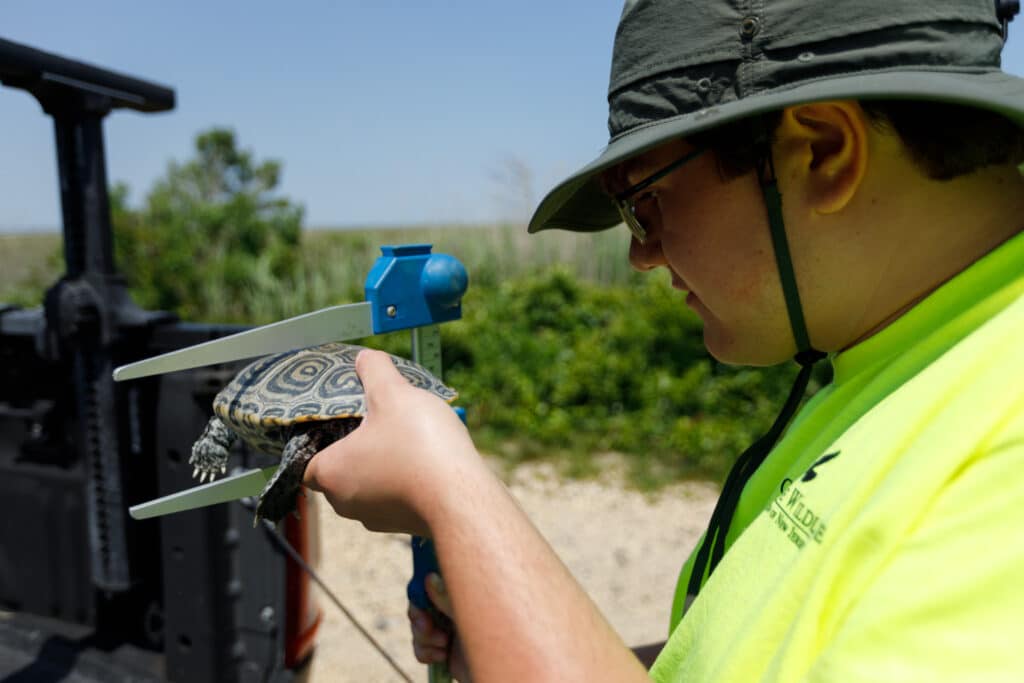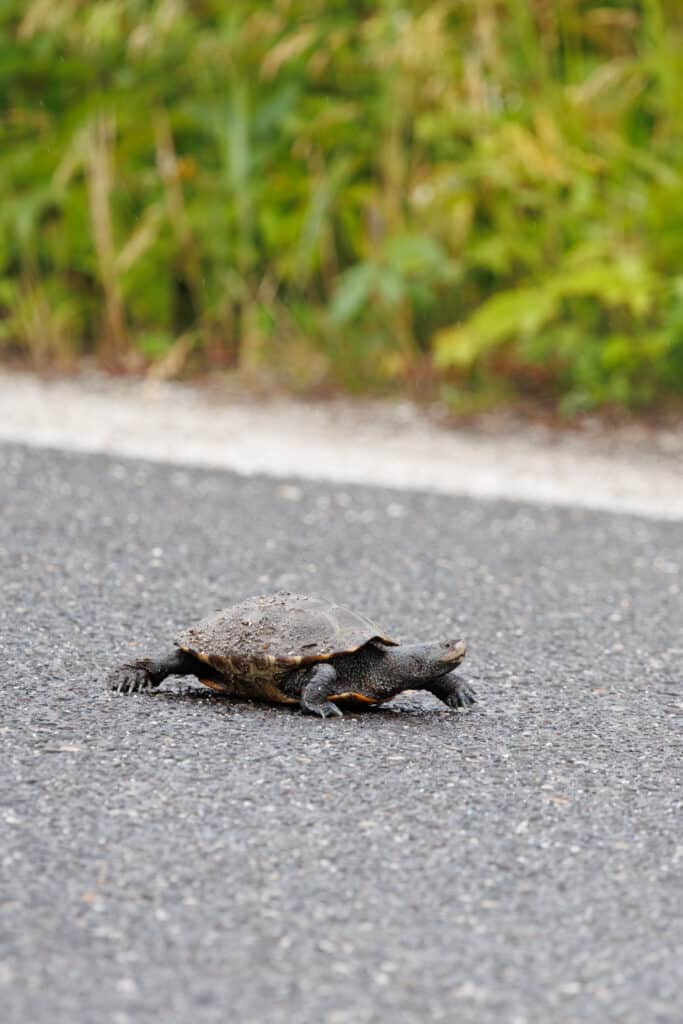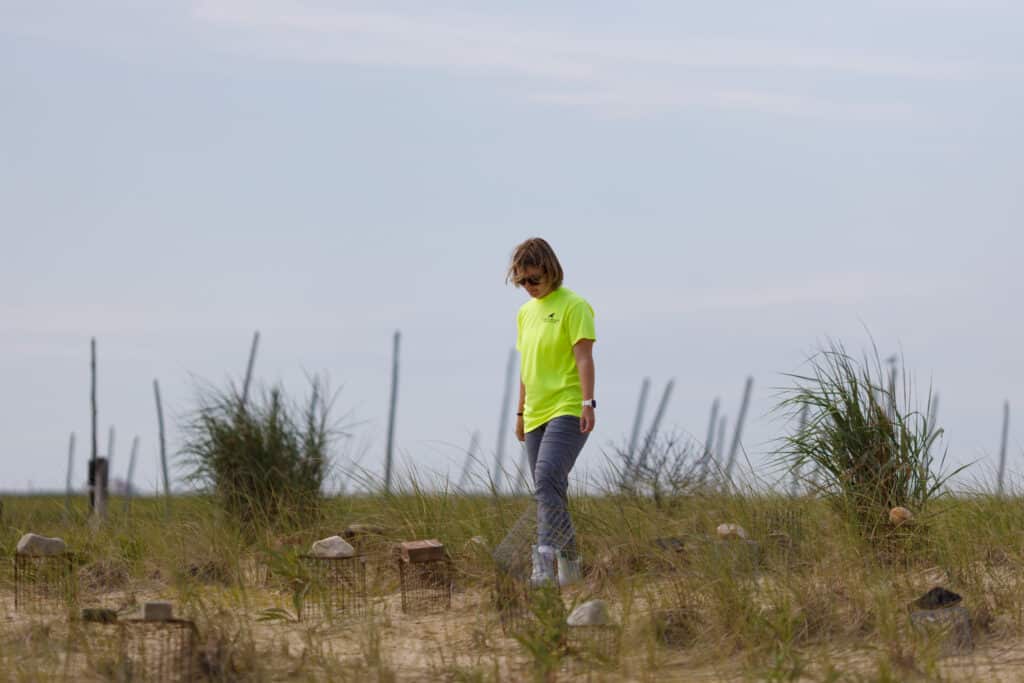Ensuring More Terrapins Live to See Tomorrow

Northern diamondback terrapin nesting season may be coming to end, but Conserve Wildlife Foundation’s Great Bay Terrapin Project volunteers are still hard at work. During the peak of their nesting season, in June and July, they drive up and down Great Bay Boulevard in Little Egg Harbor Township in search of terrapins crossing the road.
Summertime is peak terrapin crossing season, with females coming to shore to lay their eggs in early to mid-summer and hatchlings finding their way back home in August. The problem is, they often end up on the road, where they run the risk of being crushed by passing vehicles. On Great Bay Boulevard, a coastal road with few speed limit signs and a great number of terrapins, this is especially troublesome.
This project aims to help these terrapins survive the traffic by making drivers more aware of their presence. It also opens up an opportunity to learn more about terrapins through data collection.
When a terrapin is found on the road, the volunteers stop to examine it. They take measurements of the body, from the length of the shell to the number of scutes (shell plates) the turtle has. Then, they check for tags and notched shell codes, which help them to track and identify terrapins. For newly captured individuals, they are marked before being sent back on their way.

Most of the terrapins they find during the nesting season are females looking to lay their eggs in the sandy shoulders of the road, since they are elevated from the marsh and less prone to flooding. Viable eggs found inside of deceased terrapins are relocated to a habitat enhancement area. Here, eggs are protected from predators and poachers with cages and cameras.

This extra help can go a long way to boost terrapin populations, and most importantly, it makes terrapins more visible. When driving along Great Bay Boulevard, people are destined to see the terrapin crossing signs, and the neon green shirts of the volunteers. They may even stop to talk with the volunteers while they gather their data on the roadside, as is often the case. By raising awareness about terrapins, it makes the public more likely to stop to let a turtle pass or drive slower down terrapin-populated roads, and all of this means that there will be more terrapins that live to see tomorrow. In New Jersey’s marshes, that is extremely important for maintaining the entire ecosystem.
Discover more from Conserve Wildlife Foundation of NJ
Subscribe to get the latest posts sent to your email.
